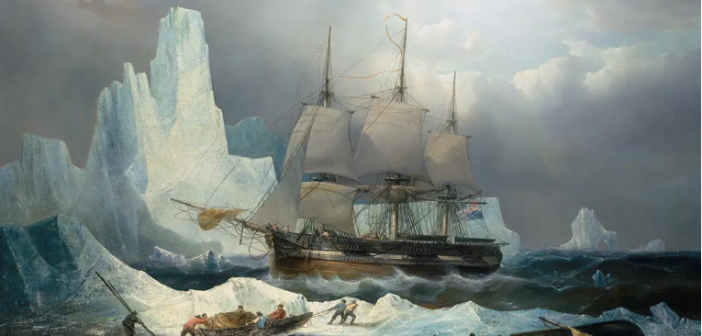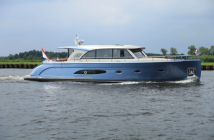Archeologists and divers working with Parks Canada and the Inuit population have found new artifacts from one of British explorer John Hope Franklin’s ships that may help them understand what happened to Franklin and his 128 men when they were trapped in the Arctic and disappeared in 1846.
Working in 37-degree water, divers found some 350 artifacts from the HMS Erebus, one of Franklin’s ships, in about 40 feet of water off King William Island. On 93 dives, the divers were able to reach only three cabins on the Erebus last fall, with 17 more to explore. The deck of the ship had collapsed, and moving around the cabins was extremely difficult and dangerous. Among the artifacts were a hairbrush, an accordion, and a Royal Navy lieutenants’ epaulets. Divers have not yet started exploring the remains on the HMS Terror, Franklin’s flagship, which is nearby.
The fate of Franklin, who had led three previous expeditions to the Arctic, and his crew, has remained one of the most intriguing naval mysteries of modern times. They left Greenhithe, England, on May 19, 1845, on the two ships on an expedition to find a Northwest Passage that would lead across the top of the world to China and India.
Along with Franklin and the 128 crew, the ships carried a Newfoundland dog named Neptune, a monkey named Jacko, libraries with more than 1,000 books, and three years’ worth of food supplies, including many tins filled with meat. Both ships had steam engines, something new at the time, and could make 4 knots under power.
The ships were last seen by Europeans on July 28, 1845, when whalers found them both moored to an iceberg in Lancaster Sound. In 1850, when there still was no sign of Franklin or his men, his wife pressured the government to mount a search expedition. Other explorers and adventurers also tried to find whatever they could of the missing Franklin Expedition.
In 1858, a search party found notes saying that the ships had been trapped in ice off King William Island in September, 1846. Franklin died the next year. Inuit hunters reported that both ships had become icebound and that men tried to reach safety on foot, but died of the cold and perhaps cannibalism. Another theory is that the crew could have been poisoned by botulism from the tins of meat.
It was not until 2014 that a remote underwater vehicle picked up contours of a boat near King William Island. Parks Canada said it was the Erebus; Parks Canada found the Terror in 2016. The underwater explorations will continue next summer. Read more:
https://www.nytimes.com/2020/02/20/world/canada/hms-erebus-terror-artifacts.html




